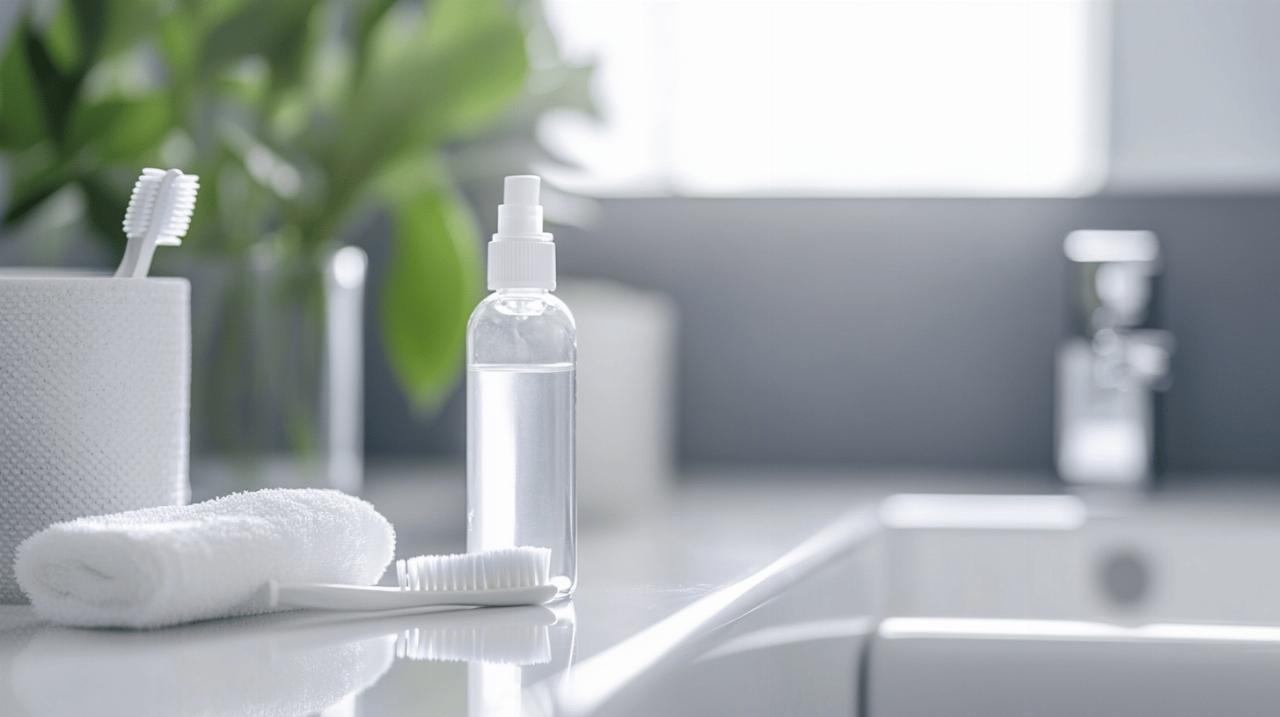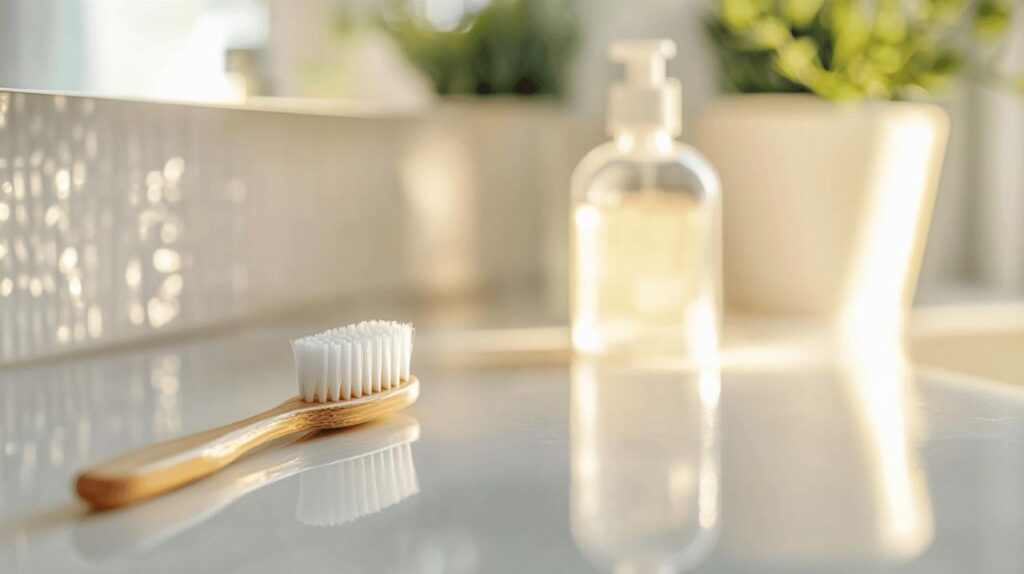Achieving a dazzling smile has become a top priority for many people looking to boost their confidence and make a lasting impression. Over time, teeth naturally lose their brilliance due to everyday habits such as drinking tea, coffee, and red wine, as well as smoking and the natural ageing process. With so many teeth whitening products flooding the market, it can be challenging to determine which methods truly deliver results. Hydrogen peroxide has emerged as a popular ingredient in both over-the-counter and professional dental treatments, promising to restore that coveted sparkle. But does it really work, and more importantly, is it safe? This article explores the science behind hydrogen peroxide, its practical applications, and how you can achieve an effective, sparkling smile whilst maintaining optimal dental health.
Understanding hydrogen peroxide: the science behind the sparkle
What makes hydrogen peroxide effective for whitening?
Hydrogen peroxide is a bleaching agent widely recognised for its ability to break down stains on teeth through a process called oxidation. When this chemical compound comes into contact with discoloured molecules known as chromogens, it effectively breaks the bonds between these stain molecules, lightening the appearance of your teeth. This oxidation process is what makes hydrogen peroxide the active ingredient in countless whitening toothpastes, gels, strips, and professional dental treatments. The American Dental Association has approved hydrogen peroxide products for cosmetic dentistry use, provided they contain concentrations no greater than 3.5 per cent for at-home applications. The compound's effectiveness stems from its ability to penetrate the enamel and reach the deeper layers of the tooth, targeting both surface stains and those embedded within the tooth structure.
Different Concentrations and Their Impact on Your Teeth
The concentration of hydrogen peroxide in whitening products varies significantly, and understanding these differences is crucial for achieving safe and effective results. Shop-bought treatments available at your local chemist typically contain a maximum of 0.1 per cent hydrogen peroxide, which is considerably weaker than what dental professionals can offer. Dentists have the authority to use concentrations of up to 6 per cent, delivering more dramatic and faster results under proper dental supervision. Products with concentrations exceeding 6 per cent should only be administered by qualified dental practitioners to minimise the risk of tooth sensitivity and gum irritation. Toothpastes and mouthwashes containing hydrogen peroxide should be used at least twice daily for two minutes to gradually remove surface stains and maintain oral hygiene. Whitening strips and gels generally show noticeable results within two weeks, whilst gel-filled trays can produce visible changes in just a few days. The concentration you choose should align with your specific needs and dental health, which is why consulting with your dentist before beginning any whitening treatment is highly recommended.
Home whitening methods: safely using hydrogen peroxide
Proper dilution techniques and application tips
Using hydrogen peroxide at home requires careful attention to dilution and application methods to ensure safety and effectiveness. For those considering hydrogen peroxide as a mouthwash, it is essential to dilute the solution properly and avoid swallowing any of the liquid. Many people apply the solution using a cotton bud directly onto the teeth, allowing it to sit for a short period before rinsing thoroughly with water. Starting with a low concentration is advisable, especially if you have sensitive teeth or a history of gum irritation. Following the product instructions carefully prevents overdoing the treatment, which can lead to unwanted side effects such as enamel erosion or heightened tooth sensitivity. After using hydrogen peroxide, it is beneficial to rinse your mouth thoroughly and follow up with a fluoride toothpaste to strengthen the enamel and protect against tooth erosion. Incorporating a soft toothbrush into your routine minimises the risk of damaging your gums and enamel during the whitening process. Additionally, limiting the frequency of use and taking breaks between treatments allows your teeth and gums to recover, maintaining overall dental health whilst pursuing a brighter smile.
Common Mistakes to Avoid When Whitening at Home
Whilst hydrogen peroxide can be an effective tool for teeth whitening, several common mistakes can undermine your efforts or even cause harm. One prevalent error is using excessively high concentrations of hydrogen peroxide without professional guidance, which can lead to severe tooth sensitivity and gum damage. Another mistake is combining hydrogen peroxide with baking soda at home, a practice that is not recommended due to the abrasive nature of baking soda, which can wear down enamel over time. Many individuals also neglect to check for the ADA Seal of Acceptance on over-the-counter products, which ensures that the product has been tested for safety and efficacy. Overuse is another concern, as some people believe that more frequent applications will yield faster results, when in reality this approach increases the risk of side effects. Ignoring tooth sensitivity or gum irritation and continuing with the treatment can exacerbate the problem, leading to long-term damage. Unproven home remedies, such as using activated charcoal or fruit peelings, may seem appealing but often lack scientific backing and can harm your teeth. To avoid these pitfalls, always follow the recommended usage guidelines, consult your dentist if you experience discomfort, and prioritise products that have been clinically tested and approved by reputable dental associations.
Beyond whitening: additional oral health benefits
How hydrogen peroxide supports healthy gums
 Interestingly, the benefits of hydrogen peroxide extend beyond cosmetic dentistry and into the realm of general dentistry and gum health. Its antiseptic properties make it effective at reducing bacteria in the mouth, which can help prevent gum disease and inflammation. Regular use of hydrogen peroxide as a mouthwash, when properly diluted, can contribute to healthier gums by minimising the bacterial load that leads to plaque accumulation and gum irritation. Healthy gums are absolutely crucial for maintaining a dazzling smile, as inflamed or bleeding gums can detract from the appearance of even the whitest teeth and may lead to more serious dental issues such as periodontitis. Hydrogen peroxide's ability to support gum health makes it a valuable addition to a comprehensive oral hygiene routine. However, it should not replace traditional plaque management methods such as brushing, flossing, and regular dental cleanings. By incorporating hydrogen peroxide into your daily routine alongside these fundamental practices, you can enjoy both aesthetic and health benefits, ensuring that your smile remains not only sparkling but also supported by a strong foundation of gum health.
Interestingly, the benefits of hydrogen peroxide extend beyond cosmetic dentistry and into the realm of general dentistry and gum health. Its antiseptic properties make it effective at reducing bacteria in the mouth, which can help prevent gum disease and inflammation. Regular use of hydrogen peroxide as a mouthwash, when properly diluted, can contribute to healthier gums by minimising the bacterial load that leads to plaque accumulation and gum irritation. Healthy gums are absolutely crucial for maintaining a dazzling smile, as inflamed or bleeding gums can detract from the appearance of even the whitest teeth and may lead to more serious dental issues such as periodontitis. Hydrogen peroxide's ability to support gum health makes it a valuable addition to a comprehensive oral hygiene routine. However, it should not replace traditional plaque management methods such as brushing, flossing, and regular dental cleanings. By incorporating hydrogen peroxide into your daily routine alongside these fundamental practices, you can enjoy both aesthetic and health benefits, ensuring that your smile remains not only sparkling but also supported by a strong foundation of gum health.
Complementary practices for comprehensive dental care
Achieving and maintaining a brilliant smile involves more than just whitening treatments. A holistic approach to dental care includes brushing your teeth at least twice a day with fluoride toothpaste, using dental floss to remove food particles and plaque from between your teeth, and scheduling regular dental appointments for professional cleanings and check-ups. Some individuals find that incorporating baking soda into their routine as a gentle abrasive helps remove surface stains, though it should be used sparingly to avoid enamel damage. Whitening mouthwash can also be a convenient addition to your daily regimen, offering mild whitening effects whilst freshening your breath. For an extra touch of freshness, consider adding a drop or two of peppermint oil to your mouthwash, which leaves your breath smelling minty and invigorating. Whilst peppermint oil does not contribute to teeth whitening, it enhances the overall experience of oral care and makes you feel as though you have just stepped out of the dentist's chair. Managing your diet is another crucial aspect of comprehensive dental care, as reducing your intake of staining foods and beverages such as coffee, tea, and red wine can help preserve the whiteness of your teeth. Ultimately, combining effective whitening treatments with diligent oral hygiene practices and professional dental supervision ensures that your smile remains both dazzling and healthy for years to come.
Comparing your options: at-home treatment vs professional care
The advantages of professional whitening treatments
Whilst at-home whitening methods offer convenience and affordability, professional whitening treatments provided by dentists deliver superior results in terms of both effectiveness and safety. Dentists have access to much stronger concentrations of hydrogen peroxide and carbamide peroxide, which penetrate deeper into the tooth structure and produce more dramatic whitening effects in a shorter period. Professional treatments often include the use of custom-fitted trays designed to protect your gums and ensure even application of the bleaching agent, minimising the risk of gum irritation and uneven whitening. Advanced techniques such as laser teeth whitening can further accelerate the process, delivering noticeable improvements in just one session. Dentists also conduct a thorough examination of your teeth and gums before beginning any whitening treatment, ensuring that you are a suitable candidate and identifying any underlying issues such as tooth decay or gum disease that could be exacerbated by whitening products. For those seeking the most effective and safest route to a sparkling smile, professional whitening treatments such as Enlighten teeth whitening, offered at reputable clinics, represent the gold standard in cosmetic dentistry. Whilst these treatments come with a higher price tag compared to over-the-counter products, the investment often pays off in the form of longer-lasting, more consistent results and the peace of mind that comes with professional dental supervision.
When to consult your dentist about whitening
Knowing when to seek professional advice is essential for achieving safe and effective teeth whitening results. If you experience persistent tooth sensitivity, gum irritation, or any discomfort whilst using at-home whitening products, it is crucial to consult your dentist promptly. These symptoms may indicate that the concentration of hydrogen peroxide is too high for your dental health or that there are underlying issues such as enamel erosion or gum disease that need to be addressed. Additionally, individuals with dental implants, crowns, or extensive tooth discolouration may not respond well to standard whitening treatments and should discuss alternative options with their dentist. Before embarking on any whitening regimen, a dental consultation can help determine the cause of your tooth stains and recommend the most suitable products or procedures. Dentists can also provide guidance on proper usage, helping you avoid common mistakes and reduce the risk of side effects. For those interested in comprehensive facial aesthetics or teeth straightening alongside whitening, a visit to a dental practice that offers a wide range of services, including general dentistry, cosmetic dentistry, and dental implants, ensures that all aspects of your smile are addressed in a coordinated manner. Regular dental appointments for cleanings and check-ups not only help manage plaque and surface stains but also allow your dentist to monitor the health of your teeth and gums, ensuring that your pursuit of a dazzling smile does not come at the expense of your overall dental health.

